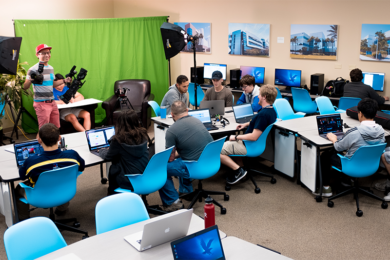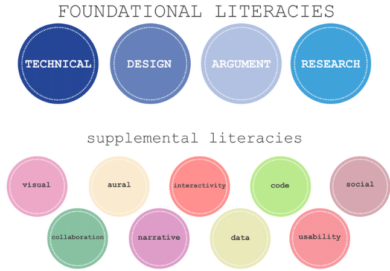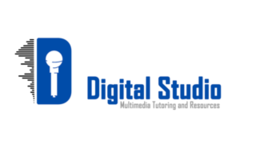About the Studio
 In 2014, the Task Force on Innovation (TFI) investigated the possibilities of creating tutoring space that would address the development of digital literacies of Daytona Beach campus students. TFI researched similar learning spaces at other universities, and small cohort of faculty, students, and staff visited USF’s Digital Media Commons in order to identify space requirements, technology needs, and policies and procedures for a similar space. The Digital Studio received pilot funding for 2015-16 academic year as a joint venture between IT and the Center for Teaching and Learning Excellence (CTLE) on Daytona Beach campus.
In 2014, the Task Force on Innovation (TFI) investigated the possibilities of creating tutoring space that would address the development of digital literacies of Daytona Beach campus students. TFI researched similar learning spaces at other universities, and small cohort of faculty, students, and staff visited USF’s Digital Media Commons in order to identify space requirements, technology needs, and policies and procedures for a similar space. The Digital Studio received pilot funding for 2015-16 academic year as a joint venture between IT and the Center for Teaching and Learning Excellence (CTLE) on Daytona Beach campus.
During Summer 2015, CTLE offered Digital Literacy Grants to seven faculty (Aaron Clevenger, Emily Faulconer, Andy Ludu, Andy Oler, James Pembridge, Dawna Rhoades, and Matt Sharp) to develop digital assignments for a number of Daytona Beach classes. Adapting and implementing a digital literacies model from the University of Southern California, faculty spent the summer developing materials and creating rubrics for these assignments. This initial pilot program has been expanded to Spring ’16 semester and includes (faculty names for Spring 2016).
Led by Interim Director, Lori Mumpower, the Digital Studio opened in Fall 2015 with a staff of seven tutors. Students visiting the Digital Studio space receive expert support for their slideshow presentations, infographics, podcasts, graphic design, and other digital projects.
CTLE Grant
The Digital Literacies Grant supports faculty who incorporate assignments that ask students to develop and exhibit digital literacy skills through faculty development and through the student use of the Digital Studio. Some example assignments for our Fall 2015 pilot group include infographics, online instructions, podcasts, slideshow presentations, and scientific-research posters.
Digital Literacies Model
CTLE, in conjunction with seven pilot faculty members, created assignments aimed at exposing students to the following digital literacies. Students who have completed these assignments noted how beneficial it was to learn these skills and that they would apply them in their careers.
The following diagram was adapted from the Institute of Multimedia Literacy at the University of South Carolina.

